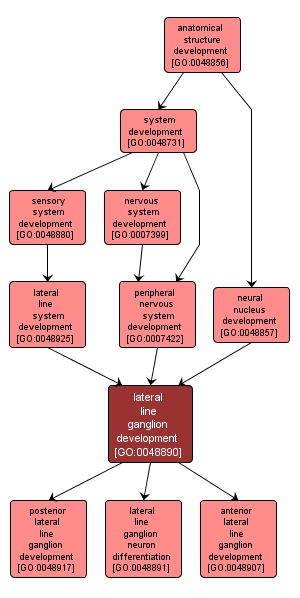GO TERM SUMMARY
|
| Name: |
lateral line ganglion development |
| Acc: |
GO:0048890 |
| Aspect: |
Biological Process |
| Desc: |
The process whose specific outcome is the progression of the lateral line ganglion over time, from its formation to the mature structure. The lateral line ganglion develops from cranial ectodermal placodes situated between the eye and ear and behind the ear. |
| Synonyms:
|
|

|
INTERACTIVE GO GRAPH
|














